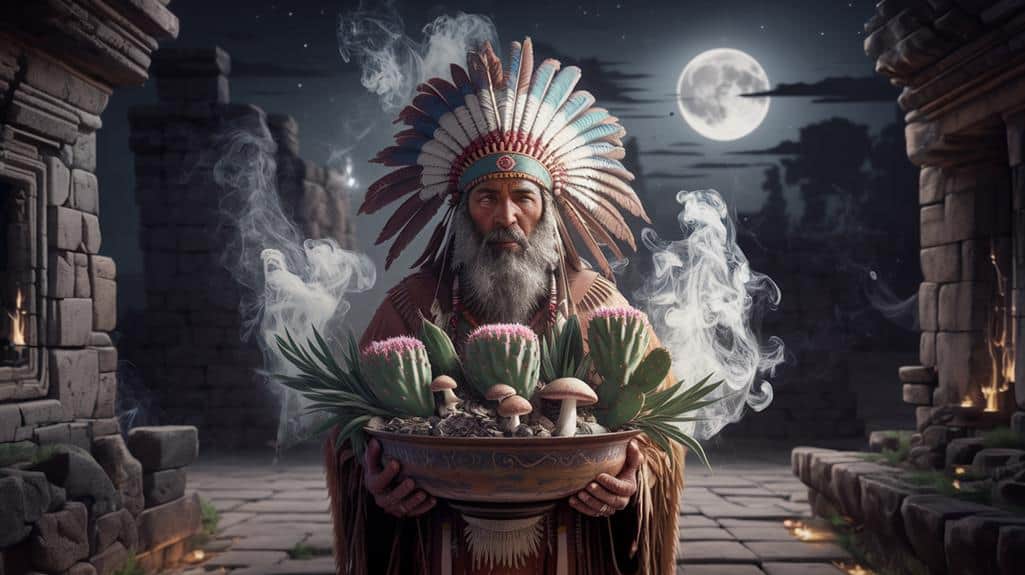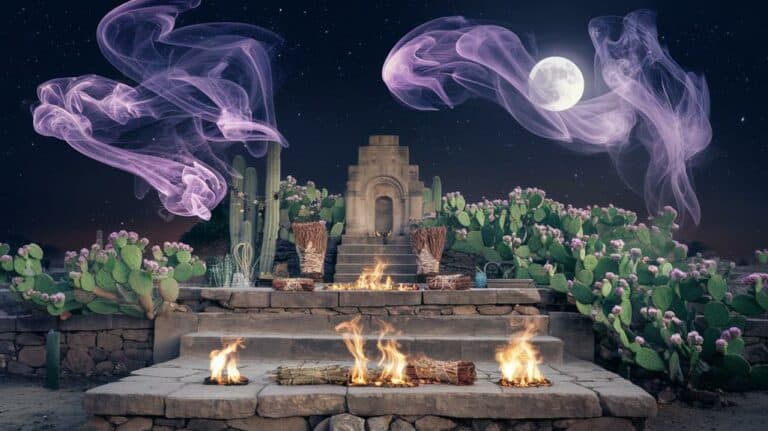The Use of Sacred Plants in Indigenous Mystical Practices
You’ve likely heard about sacred plants used in indigenous ceremonies, but you’ll find there’s much more to these profound traditions than what popular media portrays. While psychedelic tourism and casual references to shamanic practices flood social media, the authentic relationships between indigenous peoples and their plant allies span thousands of years of careful observation, spiritual dedication, and ecological stewardship. These sacred botanicals don’t merely serve as tools for altered states—they represent complex systems of knowledge that bridge physical and spiritual domains, carrying wisdom that modern society is only beginning to appreciate. Let’s explore why these practices remain essential to understanding human consciousness and our connection to the natural world.
Historical Origins and Cultural Significance
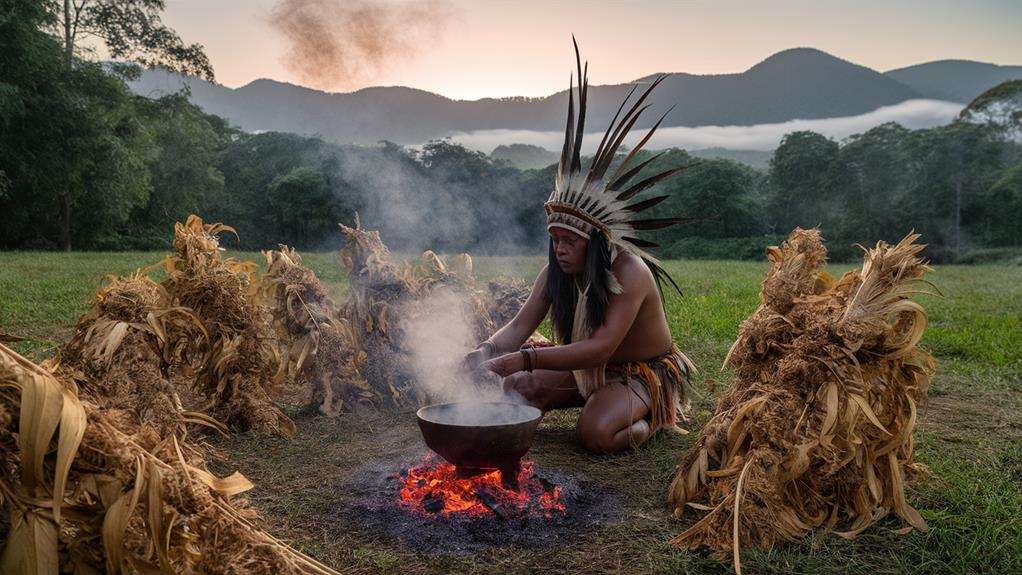
Sacred plants have been integral to indigenous spiritual practices for thousands of years, with archaeological evidence dating back to prehistoric times. You’ll find these botanical allies woven deeply into the fabric of traditional ceremonies, where they’ve served as bridges between the physical and spiritual domains, enabling your ancestors to commune with divine forces and access profound wisdom.
When you explore the cultural significance of these plants, you’ll discover that they’re far more than mere botanical specimens – they’re teachers, healers, and guardians of ancient knowledge.
The relationship between indigenous peoples and sacred plants reflects a sophisticated understanding that you’re part of an interconnected web of consciousness. In the Amazon, you’ll find shamans who’ve maintained unbroken lineages of plant wisdom, passing down precise protocols for working with ayahuasca.
In North America, you’ll encounter sacred tobacco traditions that have sustained spiritual connections for countless generations. These practices weren’t developed through casual experimentation but through careful observation and spiritual directive, creating a legacy of reverence that continues to influence modern seekers of traditional wisdom.
Sacred Plants Across World Traditions
Throughout the world’s spiritual traditions, you’ll encounter an astonishing variety of plants revered for their divine connections and ceremonial importance. From the sacred lotus of Eastern traditions to the peyote ceremonies of Native American peoples, each culture has developed profound relationships with specific plants that serve as bridges between the physical and spiritual domains.
You’ll discover that in Amazonian shamanic practices, ayahuasca vines and chacruna leaves combine to create powerful ceremonial brews.
In ancient Celtic traditions, mistletoe and oak held paramount significance in druidic rituals. Hindu practitioners revere tulsi (holy basil) as a manifestation of divine consciousness, tending to it daily in their homes and temples.
In African traditional religions, you’ll find that the odum tree serves as a dwelling place for spirits, while indigenous Australian peoples maintain deep spiritual connections with the eucalyptus and wattle.
These sacred plants don’t merely symbolize spiritual concepts – they actively participate in humanity’s quest for transcendence, healing, and wisdom. Through their careful cultivation and ceremonial use, you’re witnessing living traditions that continue to shape our understanding of the divine.
Ceremonial Protocols and Rituals
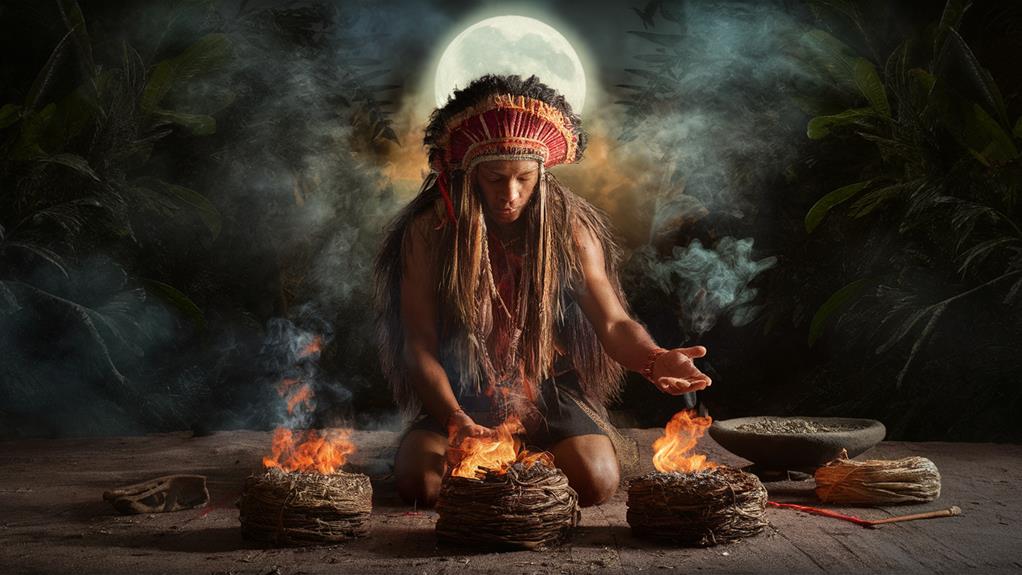
When engaging with sacred plants in indigenous ceremonies, you’ll encounter strict protocols that govern every aspect of their use – from harvest to preparation to ritual consumption.
You’ll find that these ceremonies aren’t casual affairs but carefully orchestrated spiritual journeys, where each step carries deep significance and ancestral wisdom.
You’ll need to observe specific dietary restrictions before participating, often following periods of fasting or consuming only particular foods.
The preparation space must be purified through smudging, prayer, or other cleansing rituals.
As you participate, you’ll notice how medicine people carefully select the timing of ceremonies, often aligning them with lunar cycles or seasonal changes.
During the ceremony itself, you’re expected to maintain specific postures, follow breathing techniques, and participate in prescribed songs or chants.
The ritual space becomes a sacred container where you’ll witness traditional tools being used – ceremonial pipes, drums, rattles, or specific ritual implements unique to each tradition.
Remember that these protocols aren’t arbitrary rules but time-tested practices that create the necessary conditions for profound spiritual work and healing.
Traditional Healers and Plant Knowledge
Indigenous healers invariably possess generations of accumulated wisdom about sacred plants, passed down through careful mentorship and years of dedicated practice.
You’ll find that these knowledge keepers don’t simply memorize plant properties; they’re engaging with a living tradition that connects the physical and spiritual domains through intimate understanding of each herb’s essence and energy.
When you encounter traditional healers, you’re witnessing the embodiment of an unbroken chain of wisdom that stretches back through countless generations.
They’ve learned to read nature’s subtle signs – the way certain leaves unfurl at specific moon phases, how roots respond to seasonal shifts, and which plants call out to be harvested for particular ailments.
You’ll discover that their expertise goes far beyond mere identification; it’s about understanding the sacred relationship between plant spirits and human consciousness.
This profound knowledge isn’t static – it’s constantly evolving through direct experience and spiritual communion.
Each healer adds their own insights to the collective wisdom, while maintaining the core teachings that have proven effective throughout millennia of practical application.
Sacred Geography and Harvesting Practices
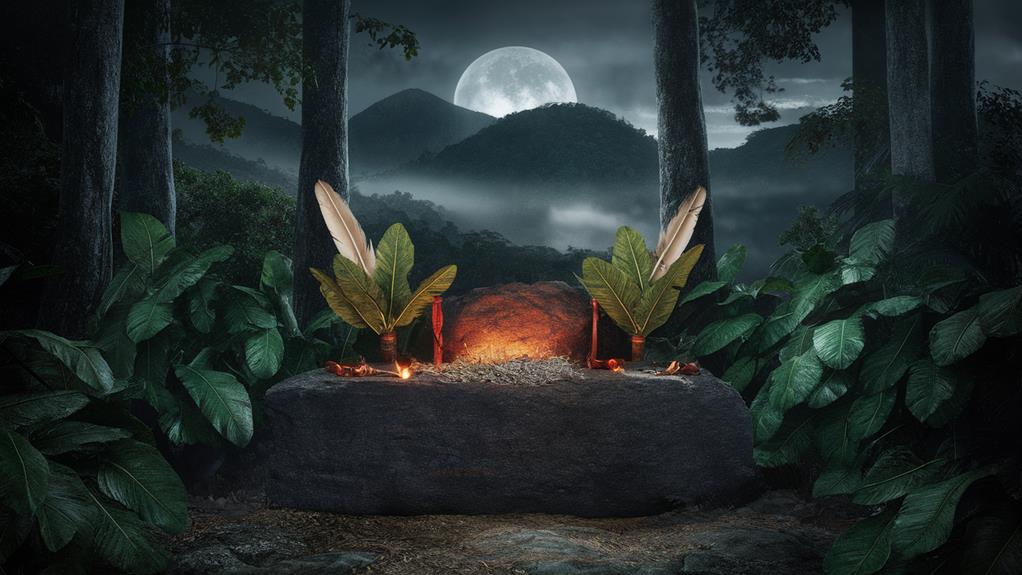
Deeply rooted in traditional knowledge, sacred plant harvesting follows precise geographic patterns that honor both spiritual and ecological principles.
You’ll find that indigenous peoples don’t merely collect plants from random locations; they’re guided by an intricate understanding of sacred landscapes where the earthly and spiritual domains intersect. These power spots, often marked by distinctive geological features or celestial alignments, are believed to enhance the plants’ medicinal and mystical properties.
When you’re learning about these practices, you’ll discover that harvesting isn’t just about the physical act of gathering – it’s a ceremony that requires specific timing and ritual preparation.
You’ll need to understand how the phases of the moon, seasonal cycles, and cardinal directions influence when and where you can respectfully collect sacred plants. Traditional harvesters won’t take from young plants, ensuring population survival, and they’ll only gather what’s needed while leaving offerings in return.
At each sacred site, you’re entering into a reciprocal relationship with the land, acknowledging that these plants aren’t commodities to be exploited but rather gifts that require responsible stewardship and profound respect.
Modern Conservation and Sustainability
These ancestral harvesting practices have found new relevance in modern conservation efforts.
You’ll discover that indigenous wisdom about plant sustainability has become increasingly essential as we face unprecedented environmental challenges.
Traditional knowledge systems, which you’ve inherited through centuries of careful observation, now offer significant insights into preserving sacred plant species while maintaining ecological balance.
When you examine current conservation strategies, you’ll find they’re increasingly incorporating indigenous perspectives on sustainable harvesting.
You’re witnessing a profound shift as Western science acknowledges what native communities have long understood – that spiritual connection to plants fosters responsible stewardship.
Today’s environmental scientists are documenting how traditional harvest restrictions, often rooted in spiritual practices, have effectively protected vulnerable species for generations.
You’re living in a time when these ancient approaches are being validated by modern research.
As you explore these intersections between traditional wisdom and contemporary conservation, you’ll recognize that the future of plant preservation lies in blending time-tested indigenous practices with current scientific methods.
It’s through this synthesis that you’ll find the most promising path forward for protecting sacred plant species.
Cultural Preservation and Sacred Rights
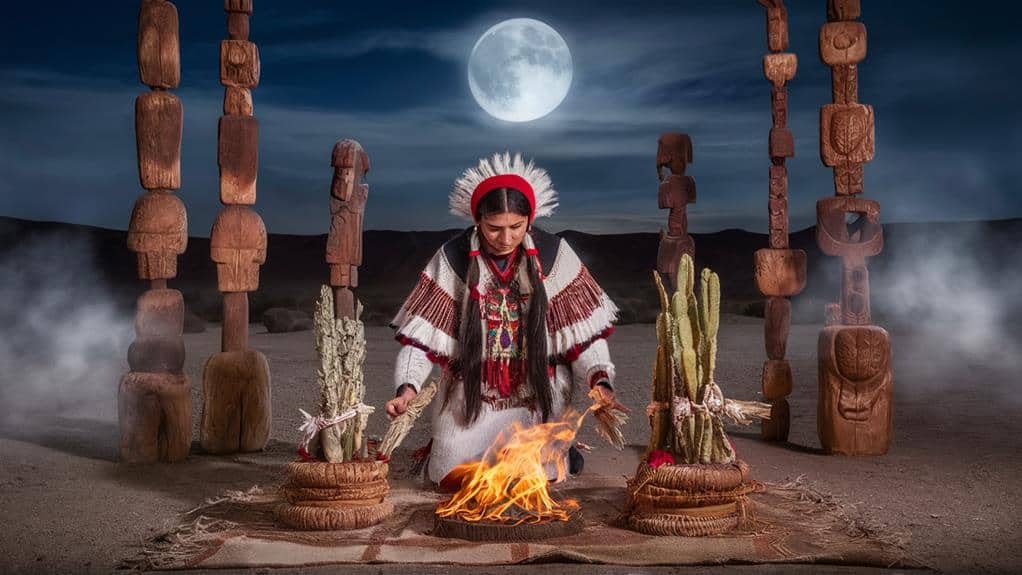
Sacred rights surrounding ceremonial plant use face mounting challenges in today’s rapidly changing world. As you witness the erosion of ancestral practices, you’ll find indigenous communities struggling to maintain their spiritual connections while maneuvering modern legal frameworks that often fail to comprehend the profound significance of their ceremonial relationships with sacred plants.
You’re living in an era where the preservation of these cultural rights isn’t just about protecting ancient traditions – it’s about safeguarding living, breathing spiritual practices that continue to shape indigenous identities.
When you explore these sacred relationships, you’ll discover that they’re intricately woven into the fabric of community healing, spiritual guidance, and cultural continuity. Yet you’ll also notice how government regulations, land access restrictions, and commercialization threaten these delicate bonds between people and their ceremonial plants.
You’re witnessing a critical moment where indigenous communities are asserting their rights to maintain these sacred connections, even as they adapt to contemporary challenges. Their resilience reminds you that cultural preservation isn’t about freezing traditions in time – it’s about ensuring living practices can evolve while maintaining their spiritual essence.



